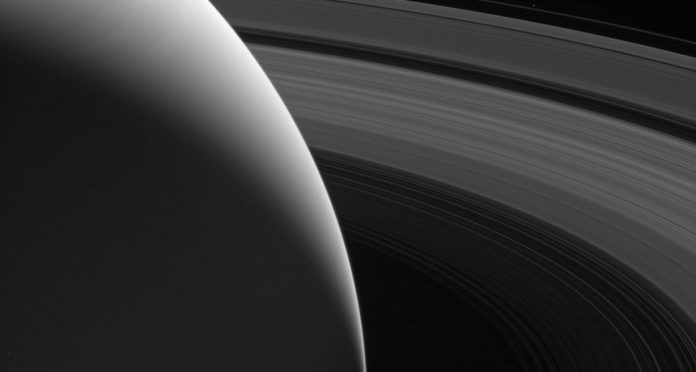Saturn is arguably the most beautiful planet in our solar system, and that’s in no small part due to its rings. It’s tough to imagine Saturn ringless, but new research finds that was the case for most of the planet’s existence. Saturn only acquired its rings relatively recently, and for most of its existence it has been as bare as Earth.
This discovery comes thanks to NASA’s Cassini spacecraft, which orbited Saturn for more than a decade before plunging into the planet’s atmosphere in late 2017. Before its death, the probe sent back all sorts of data on the atmosphere and rings of Saturn. Among other things, that information allowed scientists to finally pin down exactly how massive Saturn’s rings really are.
Cassini accomplished this by measuring the forces of gravity acting on it as it descended. If Saturn had no rings at all, the probe would simply follow a straight path downward. But because the rings have some gravitational pull, Cassini deviated a bit from that path, and scientists can work backwards from that to figure out the mass of the rings.
This is nowhere nearly as easy as it sounds—and bear in mind we’re talking about measuring the position of a space probe tumbling into the atmosphere of another planet hundreds of millions of miles away—because Saturn’s air currents were buffeting Cassini around at the same time. Only recently, when scientists gained access to the atmospheric data Cassini collected in those final moments, were they able to separate out the atmospheric movements from the gravitational movements.
Once they did that, the scientists behind this study were able to determine the mass of Saturn’s rings, and from there calculate their age. They can do this by comparing the mass of the rings and the mass of the bright, visible components. When the rings were first born, they were made entirely of bright ice, but over time that ice gets contaminated by dust and other dark materials.
According to Cassini’s data, Saturn’s rings are still mostly bright ice, which means they’re still pretty young. The scientists behind the study say that the rings formed sometime in the last 100 million years, and perhaps even as recently as 10 million years ago. Considering that Saturn was born around 4.5 billion years ago along with the rest of the planets, that means Saturn has had its rings for around 1 percent of its lifetime.
Recently, scientists using different Cassini data discovered that the planet’s rings are disappearing quickly, too. According to that study, the rings might be gone completely in only a few million years. Together, these two studies show that we shouldn’t take Saturn’s rings for granted. They’re not an intrinsic part of the planet; they’re just a beautiful transient phenomenon that we’re all lucky enough to get to witness.








